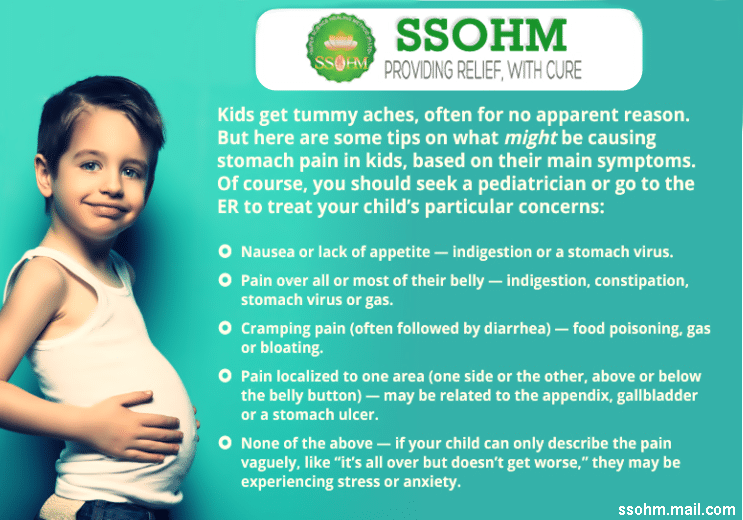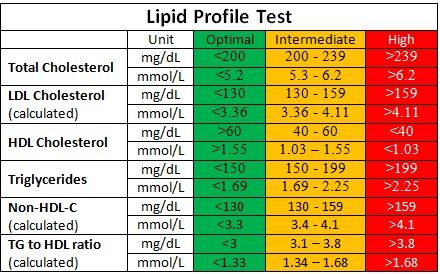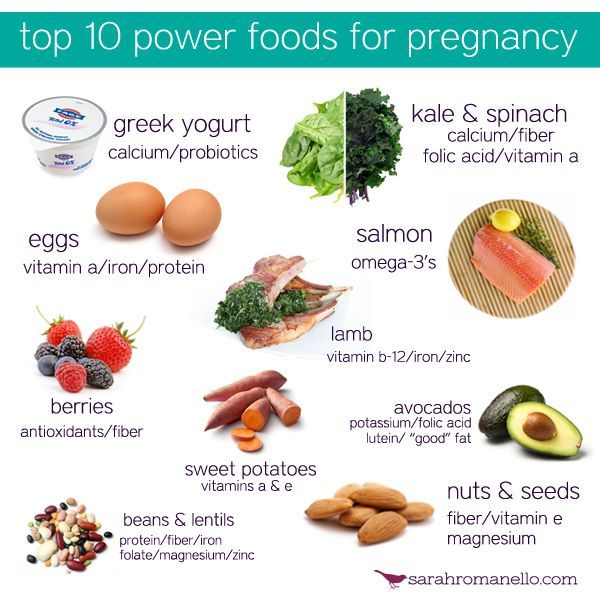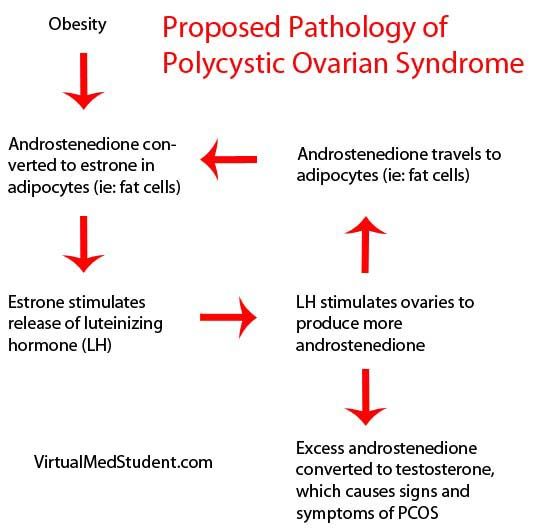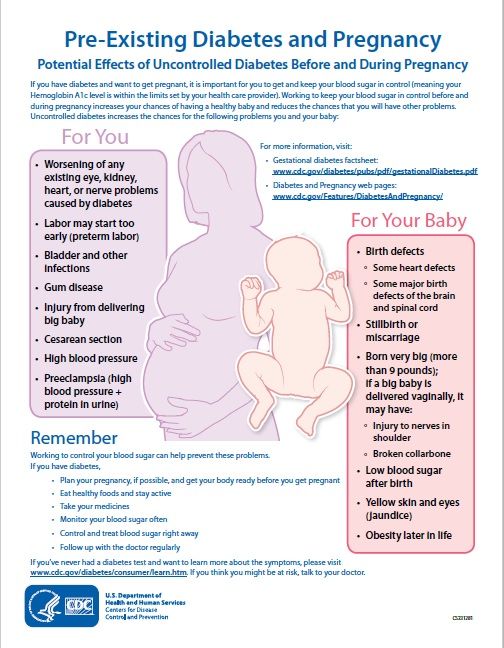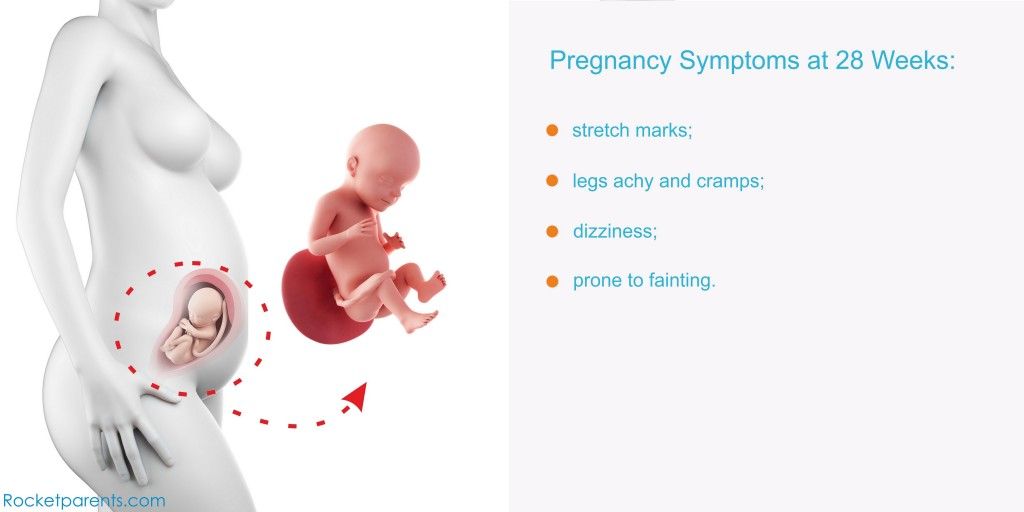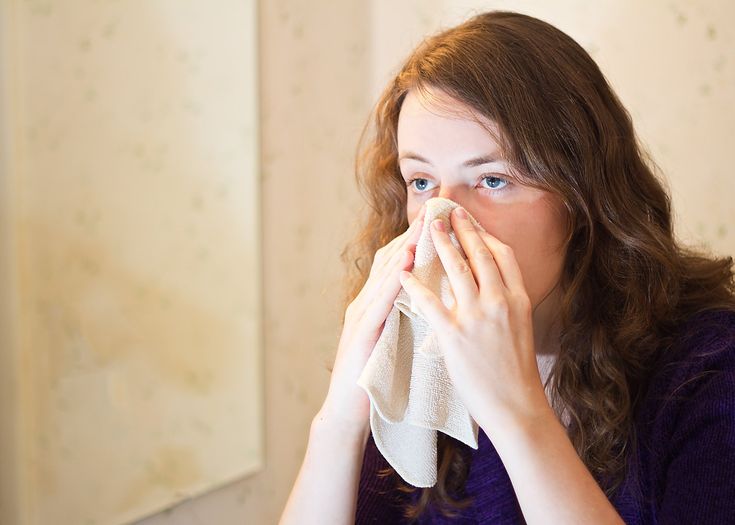How to help a child with stomach pain
Stomach Ache in Kids and Teens and What You Can Do
Learn the common causes and home remedies for stomach pain
Learn the common causes and home remedies for stomach pain
“My stomach hurts.” If you have children, chances are you’ve heard this before.
Stomach pain is one of the most common complaints among children and teens. It can range from mild discomfort to severe cramping, burning or nausea. While most cases aren’t serious, it’s helpful to know what can cause stomach pain and when to call a doctor.
Here are some of the most frequent causes of stomach problems in small children and teens:
Gas pain or indigestion is common in kids of all ages. Diet often plays a role. Carbonated drinks, such as soda may upset the stomach, especially if the child drinks through a straw. Spicy foods, beans, citrus and caffeine (including chocolate) may cause gas.
Constipation
Younger kids may not know what constipation is or that it can lead to stomach pain. If your child complains of stomach pain around the belly button or the left lower side of the abdomen, ask them when they last pooped, or if they’re having problems doing it.
Overeating
Too much of anything, from pizza and popcorn to Halloween candy, can cause abdominal pain. Kids often eat quickly and don’t realize they’re full until they’ve overdone it. Plus, eating too quickly can contribute to discomfort.
Lactose intolerance
Lactose is a type of sugar found in milk and milk products. “In order to digest lactose properly, the body produces an enzyme called lactase,” explains Sangita Bhasin, MD, a pediatrician at Scripps Coastal Medical Center Encinitas. “People who do not have this enzyme have a condition called lactose intolerance. When they consume milk products, they may have symptoms such as abdominal cramps, gas, diarrhea or constipation.”
Milk allergy
Milk allergy is a reaction to a protein in milk that may cause cramps. It is not the same as lactose intolerance.
Stress
When kids feel stressed or worried, they may feel abdominal pain. “Stomach aches that appear to have no apparent cause may be due to stress, especially if the pain is recurrent. But all the child knows is that their stomach hurts,” says Dr. Bhasin. “When this happens, gently ask the child if they’re worried about something and want to talk about it. There could be problems at school or with friends.”
Stomach virus
Bacterial or viral infections can affect the stomach and may be spread between students at school or in common areas. Stomach pain is often the first symptom, usually followed within 24 hours by vomiting and diarrhea.
Appendicitis
If your child complains of severe, constant pain in the low right side of the abdomen and even slight movement is painful, appendicitis may be to blame. Appendicitis is more common in older children and teens; it is unusual in children under age 5.
When to call the pediatrician
Most causes of stomach pain don’t require medical care, but do call your child’s doctor right away if any of the following occur:
- Pain on the lower right side is severe and constant, which may indicate appendicitis
- Pain is severe and lasts more than an hour
- Pain is constant and lasts more than two hours
- Your child has a fever and/or is vomiting
- You see blood in your child’s stool
- Your baby is younger than 12 months
“It’s always better to err on the side of caution,” says Dr. Bhasin. “If you’re concerned about your child’s stomach pain, call the doctor.”
Bhasin. “If you’re concerned about your child’s stomach pain, call the doctor.”
Home treatment for tummy aches
Most stomach aches won’t last more than an hour or two, and often you can help your child feel better by trying these tips:
- Have your child lie down and rest.
- Place a warm compress or heating pad on their stomach.
- Gently massage your child’s belly, which can help with gas and indigestion.
- Give small sips of water.
- Check with your doctor before giving any over-the-counter medication. Ibuprofen, for example, can further upset the stomach.
- If indigestion occurs often, keep a food diary and look for links between certain foods and stomach pain.
Finally, if stomach aches are a frequent problem, talk with your pediatrician. You may be able to work together to identify the cause and make changes to help your child feel better.
Abdominal pain in children - Better Health Channel
Summary
Read the full fact sheet- Many children with abdominal pain get better in hours or days without special treatment and often no cause can be found.

- If pain or other problems persist, see your doctor.
- Appendicitis is one of the more common reasons your child may need surgery.
Children often complain of stomach pain. It is one of the most common reasons parents take children to their doctor or the hospital emergency department. Stomach pain can be hard to diagnose. The doctor will ask you questions then examine your child. Sometimes a problem may be quite obvious, so no tests are needed.
Many children with stomach pain get better in hours or days without special treatment and often no cause can be found. Sometimes the cause becomes more obvious with time and treatment can be started. If pain or other problems persist, see your doctor.
Causes of abdominal pain in children
There are many health problems that can cause stomach pain for children, including:
- bowel (gut) problems – constipation, colic or irritable bowel
- infections – gastroenteritis, kidney or bladder infections, or infections in other parts of the body like the ear or chest
- food-related problems – too much food, food poisoning or food allergies
- problems outside the abdomen – muscle strain or migraine
- surgical problems – appendicitis, bowel obstruction or intussusception (telescoping of part of the gut)
- period pain – some girls can have pain before their periods start
- poisoning – such as spider bites, eating soap or smoking.
Repeat attacks of stomach pain
Some children suffer repeat attacks of stomach pain, which can be worrying for parents. Often, no health problem can be found.
Children may feel stomach pain when they are worried about themselves or people around them. Think about whether there is anything that is upsetting your child at home, school or kindergarten, or with friends. See your local doctor for advice. A referral may be needed to a paediatrician (a doctor who specialises in children).
Appendicitis explained
Appendicitis is one of the more common reasons your child may need surgery. The appendix is a small, dead-end tube leading from a part of the bowel. If this tube gets blocked, it can cause an infection. Appendicitis can happen at any age, but is rare in young children.
The pain often starts in the middle of the tummy and moves down low on the right side. The tummy becomes sore to touch. This is often worse with coughing and walking around. A child with appendicitis often shows signs of being unwell such as fever, refusing food, vomiting or (sometimes) diarrhoea.
If you are concerned your child may be developing appendicitis, visit your local doctor or go to the emergency department of your nearest hospital. An operation is often needed to remove the appendix, although in some cases the problem will settle without surgery.
Diagnosis of abdominal pain in children
When a problem is quite obvious, no tests are needed. If tests are needed, they may include:
- blood tests
- urine test
- stool (poo) sample
- x-rays
- other special tests
- review by a specialist doctor.
If your child does undergo tests, the doctor should explain the results to you. Some results may take a number of days to come back and these results will be sent to your local doctor.
Treatment for abdominal pain in children
Your child’s treatment will depend on what the doctor thinks is causing their pain. Treatment may be as simple as sending your child home with advice to rest, take fluids and eat a bland diet.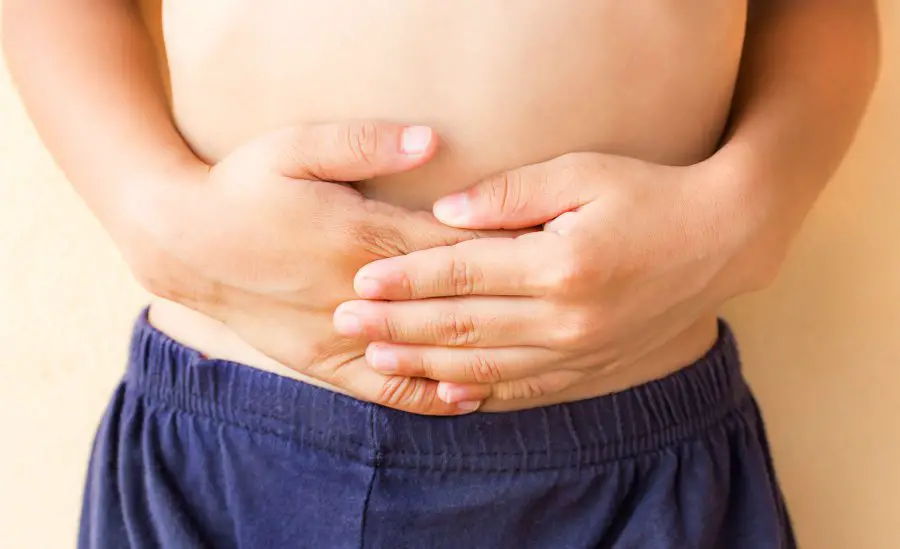 Other treatment options include hospital admission and surgery.
Other treatment options include hospital admission and surgery.
Taking care of your child with abdominal pain
General suggestions on easing the pain include:
- Make sure your child gets plenty of rest.
- Help your child drink plenty of clear fluids such as cooled boiled water or juice.
- Do not push your child to eat if they feel unwell.
- If your child is hungry, offer bland food such as crackers, rice, bananas or toast.
- Place a hot water bottle or wheat bag on your child’s tummy or run a warm bath for them. Take care not to scald yourself or your child.
- Give paracetamol if your child is in pain or is miserable. Remember that doses for children are often different to those for adults, so check the packet carefully for the right dose. Avoid giving aspirin.
When to seek urgent medical help for abdominal pain in children
Go to your local doctor or the emergency department of your nearest hospital straight away if your child has:
- severe or worsening pain or pain that has moved position
- fever or chills
- become pale, sweaty and unwell
- been vomiting for more than 24 hours
- refused to eat or drink
- blood in their vomit or poo
- problems passing urine or is producing less than four wet nappies a day
- skin rash with pain
- any other problem that concerns you.
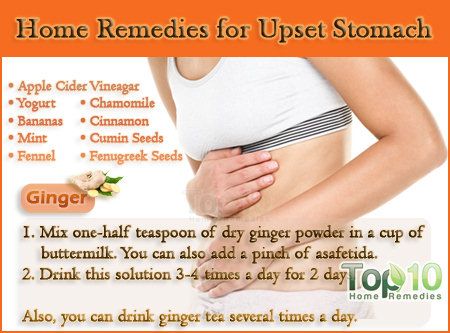
Where to get help
- Your GP (doctor)
- NURSE-ON-CALL Tel. 1300 606 024 – for expert health information and advice (24 hours, 7 days)
- The emergency department of your nearest hospital
- In an emergency, always call triple zero (000)
- Healthdirect Tel: 1800 022 222 - 24 hours health advice line
- Paediatrician
- The Gut Foundation Tel. (02) 9382 2749
- Abdominal pain in children, Emergency Department Factsheets, Victorian Government Health Information. More information here.
- Abdominal pain (stomach ache), The Children’s Hospital at Westmead, Australia. More information here.
This page has been produced in consultation with and approved by:
What to do if the child has a stomachache
Many mothers will read this article after their baby complains of pain in the tummy. For them, I will say right away - urgently see a doctor! And I’ll tell everyone else about the possible and very dangerous causes of abdominal pain in children and about what needs to be done immediately.
It so happened that in all three years as a mother, I have never encountered a situation where a baby clutches its tummy and screams “It hurts!”. I lived calmly, treated ARVI and did not even think that I would have to go through what, fortunately, had already ended.
One September afternoon after a walk, my son bent over and, holding his stomach, croaked “Mom, it hurts!”. I put him in the crib and tried to lull him to sleep. The pain intensified, and when the son had already stopped crying and huddled into a ball, she called a taxi and rushed to her private pediatrician. She examined her son and sent him to a pediatric surgeon, and she told me that the situation was very similar to acute appendicitis. The surgeon had a different opinion and sent us to the hospital with a diagnosis of colitis. My baby spent two days in intensive care and almost died from a painful shock. Then we were treated for an acute intestinal infection for a week, and then we were discharged home. A month later, the situation repeated itself with shocking accuracy. Now, without hesitation, I took my son to the surgeon, and he grinned and reproached me for the fact that I again “feed something” to the child. Again, resuscitation, from which we were taken by ambulance to the regional children's surgery. And then an urgent operation and 3 weeks of a nightmare in the department. My son's appendix was cut out. A month ago, he (the appendix) was simply "stabbed" with antibiotics. For a month, the child walked on the edge of a knife, and after the operation, the surgeon said that if we had arrived a day later, he would have done nothing.
A month later, the situation repeated itself with shocking accuracy. Now, without hesitation, I took my son to the surgeon, and he grinned and reproached me for the fact that I again “feed something” to the child. Again, resuscitation, from which we were taken by ambulance to the regional children's surgery. And then an urgent operation and 3 weeks of a nightmare in the department. My son's appendix was cut out. A month ago, he (the appendix) was simply "stabbed" with antibiotics. For a month, the child walked on the edge of a knife, and after the operation, the surgeon said that if we had arrived a day later, he would have done nothing.
I didn't tell this story to scare you, dear mothers. It's just that my situation is not an isolated case. It's all over the place! And such "professional" doctors too! But, having gone through all this hell, I realized that a child's tummy is not something that is treated at home or with advice from the Internet. I want to tell you about everything.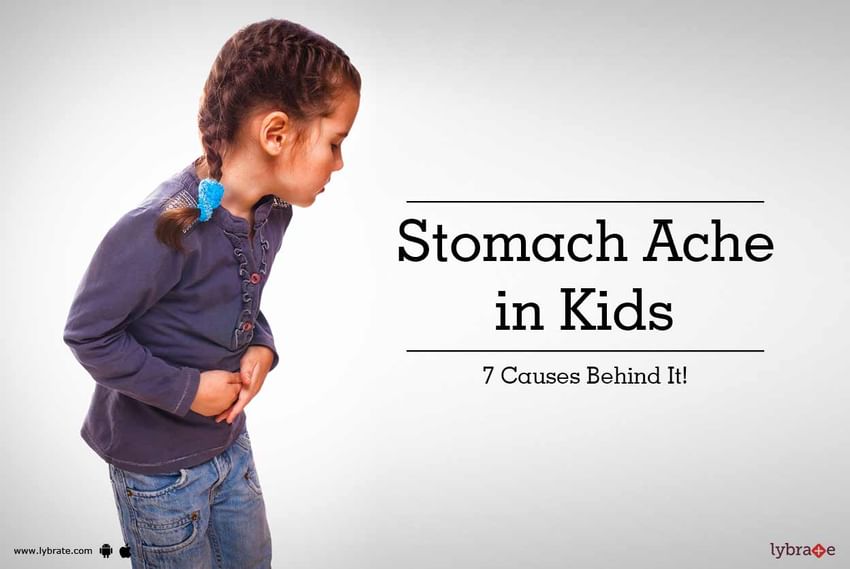
AII (acute intestinal infection)
This is the most common cause of abdominal pain. Children under the age of 6 suffer from various intestinal infections most often. Why? The child's immunity is imperfect, and the intestines are far from always able to cope with the infection on their own. Germs live everywhere - on the kitchen table, doorknobs, toys, TV remote control, etc. Any infection causes vomiting, diarrhea, abdominal pain, weakness, fever, and in small children the body is instantly dehydrated. And if it is enough for an adult to drink activated charcoal and drink a lot of liquid in case of poisoning, then serious losses of the child's body can be restored only in a hospital (antibiotics, droppers).
What should mother do? If you suspect poisoning, try to provide your child with a plentiful fractional (a teaspoon every 5 minutes) alkaline drink (Borjomi without gas, Humana-electrolyte). Along with this, exclude dairy products, raw vegetables and fruits. Giving a disinfectant in such cases is strictly contraindicated!
Giving a disinfectant in such cases is strictly contraindicated!
Monitor your child closely. As soon as you notice that the baby is lying exhausted, or vomiting / diarrhea does not stop, get ready and go to the children's infectious diseases department. And don't be afraid, it just sounds so scary. The child will be dripped, and in a day or two they will be allowed to go home.
To prevent infection, I recommend carefully monitoring the baby's diet. Eggs, meat, fish, milk require careful and lengthy heat treatment. All kitchen surfaces, toys, floors should be washed once a week with laundry soap. Do not give your baby products with a dubious expiration date (often children are poisoned by Rastishka, Masha, ice cream, citrus fruits). From an early age, teach children to wash their hands, not to take anything from the floor, not to pet cats and dogs.
Mesadenitis
This terrible word means inflammation of the lymph nodes of the peritoneum. The cause of mesadenitis can be a common ARVI (most often it happens) or an intestinal infection.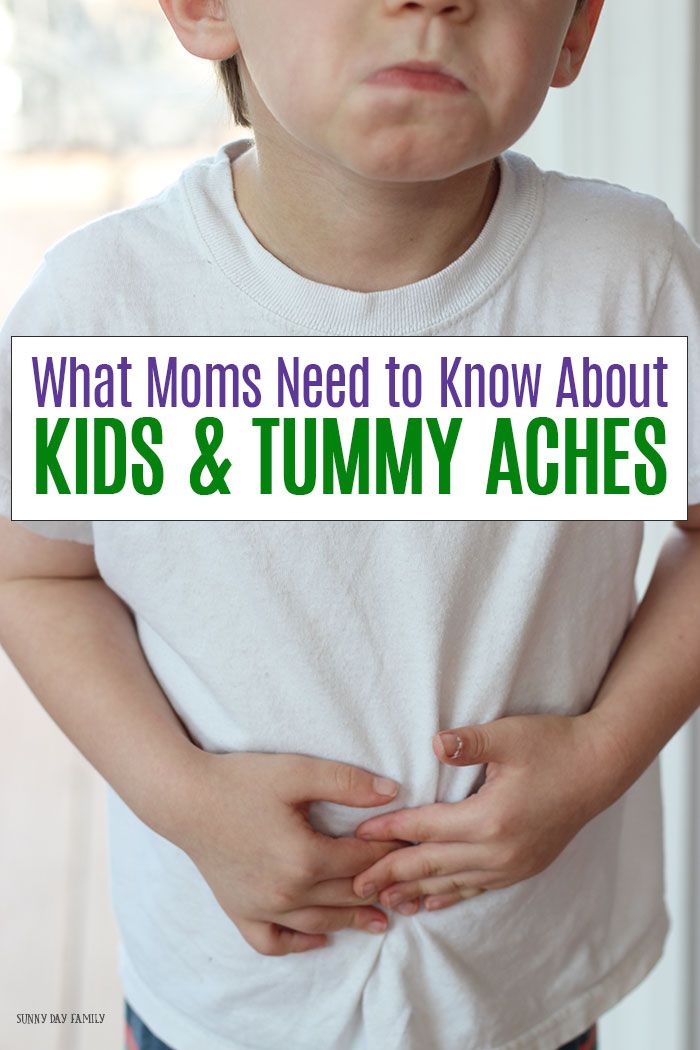 Lymphogenic spread of infection - from one node to another - gives a similar complication. At the same time, the lymph nodes on the neck, behind the ear, and near the joints can become inflamed, but only inflammation of the lymphatic tissue in the intestine causes such acute pain.
Lymphogenic spread of infection - from one node to another - gives a similar complication. At the same time, the lymph nodes on the neck, behind the ear, and near the joints can become inflamed, but only inflammation of the lymphatic tissue in the intestine causes such acute pain.
What should mom do? The worst thing about this disease is that it can only be diagnosed by ultrasound. That is, at home, you will not distinguish between mesadenitis (symptoms: acute pain, nausea, diarrhea).
Another unpleasant moment - neglected mesadenitis can cause suppuration of the lymph nodes, and this, as you can easily understand, is very scary and can only be treated surgically.
So the only thing that mom can do is to ensure that she is admitted to the surgical department as soon as possible. Timely recognized mesadenitis is treated with antibiotics, however, for a long time.
To prevent. No matter how trite it sounds, but the prevention of mesadenitis is the absence of infections, both viral and bacterial. So, dear mothers, increase your child's immunity in all possible ways!
So, dear mothers, increase your child's immunity in all possible ways!
Acute appendicitis
Each of us lives with an appendix. And everyone knows about it. But not many of us are aware of the symptoms of inflammation of appendicitis. An increase in temperature (and the vomiting that occurs against it), diarrhea and acute pain in the right iliac region (and even radiating to the groin and perineum) are far from a complete list of them. Does the baby complain about the tummy, curl up, can only lie on its side? There is every reason for parents to be concerned. Moreover, each child has individual symptoms, for all, only acute pain is characteristic. The most acute pain occurs when you release your hand from the place of pressure in the painful area - this is the first sign that you need to lead to surgeons.
In children, appendicitis proceeds especially rapidly, it becomes complicated very quickly. No one knows the exact causes of inflammation of the caecum.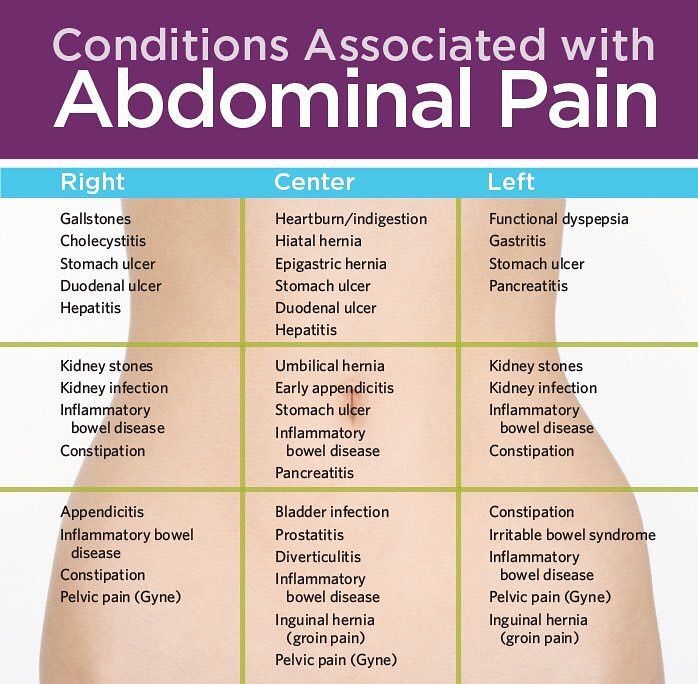 Do not listen to grandmothers, the cause of acute appendicitis is not eating seeds with husks. As the surgeon answered me, most often it is an individual feature of the body. Although nutritional errors play a significant role.
Do not listen to grandmothers, the cause of acute appendicitis is not eating seeds with husks. As the surgeon answered me, most often it is an individual feature of the body. Although nutritional errors play a significant role.
What should mother do? Many believe that the appendix becomes inflamed in children aged 6-10 years. Such is the critical period. But in our surgery, a seven-day-old child was operated on. Therefore, we do not read nonsense about age characteristics on the Internet, but immediately go to surgery. Better to be safe, as they say.
Even if a child cannot tolerate pain, never give him pain medication until the diagnosis is made - the result will be a blurred clinic and an incorrect diagnosis. Do not try to inject but-shpu - it greatly lowers the pressure, and this is fraught!
Don't be afraid to take your child to the hospital, no one will “cut” him at random. The diagnosis will be confirmed (or not confirmed) by ultrasound, and only then a decision will be made about the operation.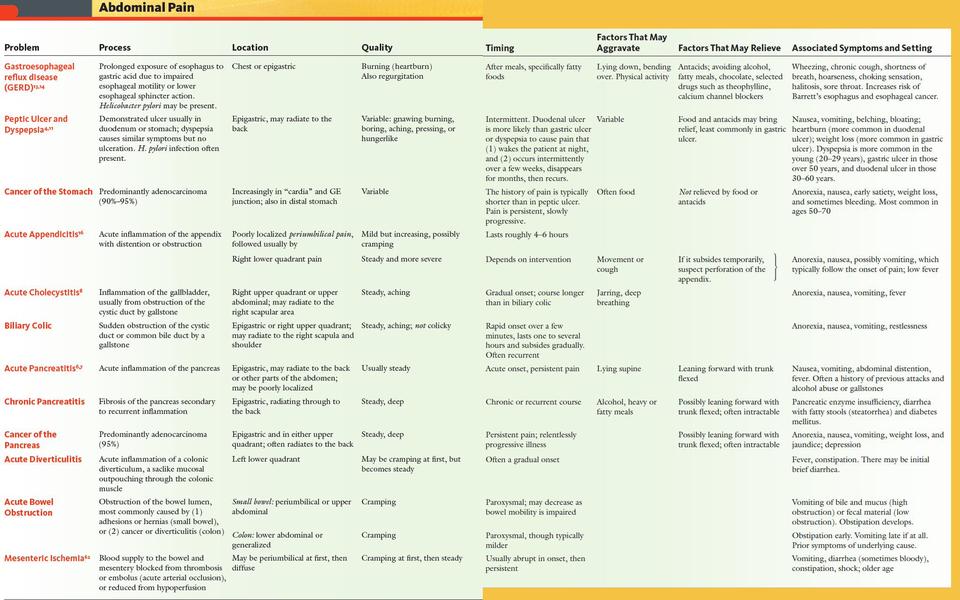
To prevent. Proper nutrition will significantly reduce the likelihood of inflammation of appendicitis. People who eat a lot of plant foods are practically out of the risk group. And you should also constantly monitor the child's stool, because constipation can lead to various intestinal inflammations.
In addition, I would like to say that some people (2-4%) have more than one appendix.
Intussusception and intestinal obstruction
My grandmother always forbade my sister and me to run and jump after meals. She said that there would be a volvulus of the intestine. “Some fears,” we thought, and were not going to listen to her. But she was right. In three weeks in the surgical department, I realized this. You should have seen how many children come in with suspected intussusception. In an accessible language, this is a twisting of the intestine or a situation where one intestine seems to be “inserted” into another ... Symptoms of intussusception: constipation, acute cramping pain in the abdomen, vomiting, weakness.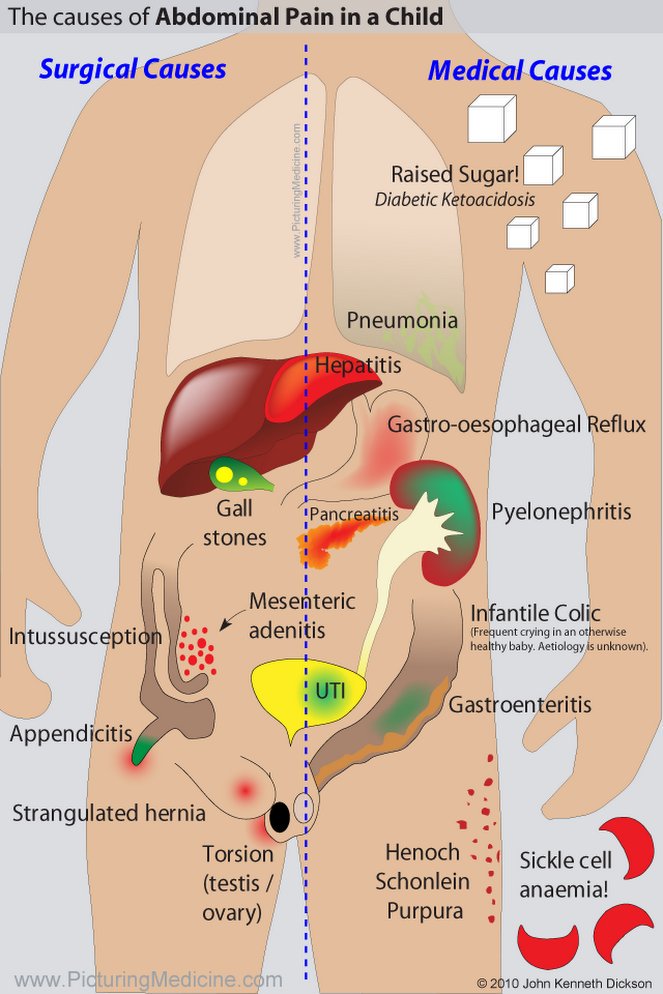 The symptoms of obstruction are added by the absence of gas removal, a sharp subsidence of peristalsis (no rumbling in the stomach is heard).
The symptoms of obstruction are added by the absence of gas removal, a sharp subsidence of peristalsis (no rumbling in the stomach is heard).
What should mother do? And again, only an ultrasound will establish the correct diagnosis. To relieve pain, you can give your child an antispasmodic and take it to the doctor ASAP. The fact is that in the first few hours this situation is reversible - the baby will be given an enema, the intestines will be blown with air or a special substance is administered, an ultrasound scan will be repeated. If the intussusception has disappeared, the baby will drink a suspension of barium, which will come out with the first stool (evidence of intestinal patency), and you will be allowed to go home. If the situation is started, one cannot do without an operation!
To prevent. Most often, intussusception occurs in children under five years old, mainly in boys. If your child is at risk, try to monitor his diet, do not allow outdoor games after meals.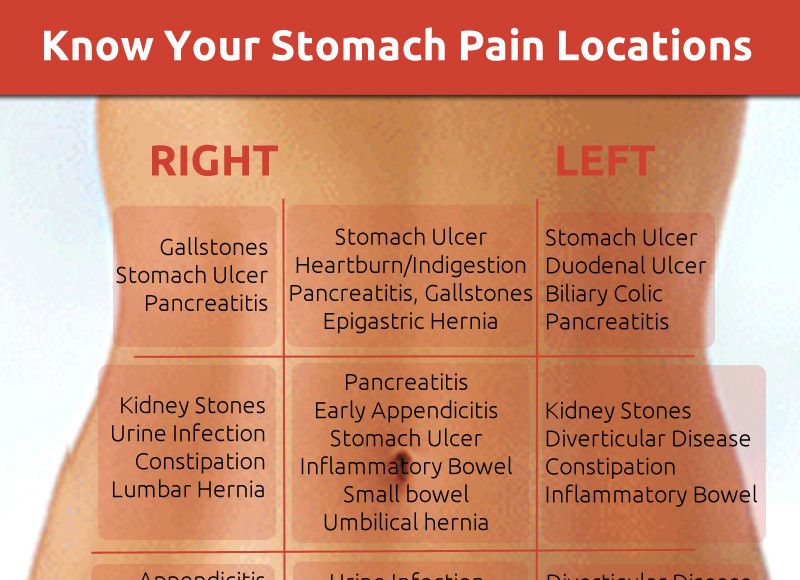
I would like to add that a child's tummy is the most inaccessible place for diagnosis. If you can notice the symptoms of tonsillitis or allergies yourself, then diagnosing the listed diseases is a matter for an experienced surgeon! And you, as a loving parent, must show the child to such an experienced surgeon that this is your main task!!!
The child has a stomach ache: why and what to do?
Parents often hear complaints from children about pain in the abdomen. Pain can be acute, chronic or recurrent (regularly recurring). During a certain period, the organs of the digestive system in children grow and develop especially intensively, namely during the first year life, from 5 to 6 years and at 9-12 years of age. During this period, the formation of gastroenterological diseases often occurs. Functional disorders may occur, manifested by increased gas formation, spasms in the intestines, untimely bowel movements. Such pain manifestations are not dangerous. If negative factors affect the body, this can cause the progression of disorders and transformation into a pathology of a chronic course.
If negative factors affect the body, this can cause the progression of disorders and transformation into a pathology of a chronic course.
Factors provoking the appearance of pain in the abdomen
In children, the stomach may hurt on the background of:
- Worm-parasitic invasion. In addition to painful manifestations in the abdomen, nausea, loss of appetite, changes in stool, and a rash may occur.
- Gastroesophageal reflux. In a child at an early age, such a disease manifests itself in the form of frequent profuse (fountain-like) regurgitation. In babies older than one year of age, it is accompanied by cough, otolaryngological diseases, damage to the enamel coating on the teeth, refusal to eat, hiccups and other signs.
- Helicobacter pylori infections. Pain in the abdomen is accompanied by symptoms such as belching, heaviness in the stomach, nausea.
- Constipation.
- Carbohydrate intolerance (usually lactose).

- Problems with bile ducts. In this case, the child complains of aching pain in the right hypochondrium, nausea, bitterness in the oral cavity and other manifestations.
- Intestinal infections, food intoxication.
- Intestinal pathologies of inflammatory nature.
- Gynecological diseases - adnexitis, ovarian cysts, etc. Usually these causes appear in girls in adolescence.
- Diseases of the chest organs - pneumonia, pleurisy.
- Diseases of the urinary system of an infectious nature. Accompanied by a violation of the urinary function, an increase in body temperature.
In addition, the stomach can hurt with chronic stress. The cause of stress lies in the following factors:
- increased school and extracurricular workload;
- increase in the flow of information received;
- violation of the order of food consumption.
If your stomach hurts, you need to reduce the amount of food consumed, and food can only be boiled, stewed or baked. Fast food, marinades, smoked meats, soda, fatty, fried, spicy and salty foods will have to be abandoned.
Fast food, marinades, smoked meats, soda, fatty, fried, spicy and salty foods will have to be abandoned.
If a child has acute abdominal pain, the first requirement is the exclusion of a number of diseases that are united under the concept of "acute abdomen". This includes an acute disease of the peritoneal organs, which requires emergency care.
You should immediately seek specialist help:
- in case of acute painful manifestations that bother the child for more than 2 hours;
- for cramping pains lasting more than 12 hours;
- when vomiting occurs, including discharge mixed with blood and bile;
- when blood is found in the stool;
- when refusing food, and also if the baby does not allow touching the stomach;
- with localization of pain in the right side of the abdomen from below;
- if the pain appeared after an injury;
- if the child wakes up at night due to pain and cannot sleep;
- for abdominal pain accompanied by difficult or painful urination;
- with severe pallor of the skin, the appearance of cold sweat, fever, rashes, drowsiness and lethargy;
- for prolonged constipation, loose stools, absence of gas;
- for sharp pains during or immediately after eating.

Prohibited actions for abdominal pain in children
If a child has a stomachache, it is forbidden:
Preventive measures
To prevent the occurrence of abdominal pain in a child, initially it is necessary to normalize the diet and eating schedule. To improve the digestive process, fermented milk products must be present in the children's menu. In addition, you need to take care of getting the child's body all the necessary vitamins and minerals. Moreover, the food for the child should be of high quality. It is necessary to exclude the use of sweet juice, soda and starchy foods in excessive quantities.
To maintain the health of the digestive tract, it is important to control the child's diet and adherence to hygiene measures.